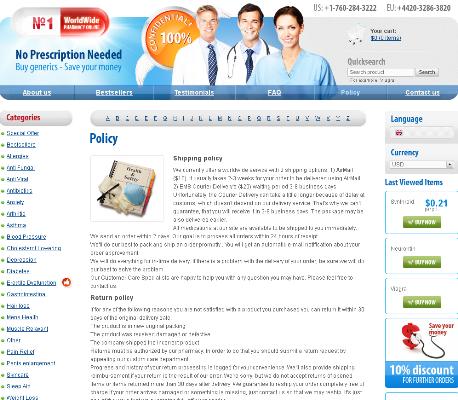Tapering Off Prelone Safely: Doctor Guidance Needed
Why Slow Dose Reduction Prevents Dangerous Withdrawal
At the clinic I felt vulnerable yet hopeful; my doctor explained that gradual change gives the body time to adapt.
Stories of sudden stops turning into crisis stuck with me, so we chose a stepwise reduction rooted in physiology and monitoring.
You and your physician can tailor pacing to dose, duration, and symptoms; small weekly decreases often avert rebound problems and adrenal stress.
Maintain open communication, track sleep and mood, and Recieve guidance for labs or taper slows when needed.
| Tip | Pace | Monitor | Mood | Lab |
| Checks | Call | Doctor | Slow | Adjust |
Recognizing Withdrawal Symptoms and When to Call Doctor

That first week felt cautious; I tracked sleep, appetite and moods while tapering prelone, learning to listen to my body. Small tremors, fatigue or anxiety can creep in and feel surprising, yet they are common as doses fall and note any patterns over time.
Know the warning signs: intense dizziness, chest pain, severe abdominal pain, fever or suicidal thoughts need immediate medical advice. Less severe symptoms, nausea, headaches, muscle aches, insomnia, are often transient but deserve follow up with your clinician.
Keep a log, bring it to appointments, and ask for a slow, flexible plan. Occassionally a pause or small dose increase is neccessary; clear communication with your doctor can prevent complications and restore calm.
Collaboration with Your Physician for Personalized Tapering
At the clinic she described how her doses became a burden, and together we sketched a plan that felt safer than quitting cold turkey. Your doctor will map a taper that fits your health history, activity level, and risk factors, creating small steps you can follow.
Using prelone requires attention to timing and symptoms; physicians Occassionally recommend weekly or biweekly reductions tailored to response. Labs, blood pressure checks, and honest symptom tracking allow dose changes to be adjusted before withdrawal escalates. They will consider other medications, infections, and adrenal function to avoid complications.
Stay in close contact: report sleep changes, mood shifts, or new aches right away so the plan can be modified. Shared decision-making empowers you and your clinician to pause or reverse reductions when needed, making the transition smoother and less stressful. Carry emergency contact and medication list.
Practical Stepwise Schedules and Dose Adjustment Strategies

Sarah remembered how frightening the thought of stopping felt, so her doctor designed a clear, gradual plan that felt like a roadmap rather than a cliff. They began with modest 10%–20% reductions every one to two weeks, tracking symptoms and sleep, and used pill-splitting and liquid formulations to hit precise doses. When breakthrough symptoms showed, they slowed the pace, sometimes pausing for a week and noting changes in a log.
Her physician explained that chronic high-dose users require much slower shifts — sometimes 5% decrements — and that for drugs like prelone, lab checks and blood pressure monitoring are part of the plan. They built in contingency steps: revert to the prior dose if severe withdrawal occured, add temporary symptomatic meds, or stretch intervals. Good communication, clear written schedules, and frequent follow-ups make the path feel manageable.
Managing Side Effects during Taper with Supportive Care
When you and your doctor taper a steroid such as prelone, side effects can feel alarming; a calm, stepwise plan turns panic into control. Clear expectations, regular check-ins, and small supportive measures ease symptoms and build confidence.
Keep simple tools ready: hydration, sleep routines, graded activity, and nutrition. Use medications sparingly for symptom relief and report unusual signs. Occassionally clinicians adjust pace or add temporary therapies to smooth the transition — that flexibility is often lifesaving.
Work closely with your team, note patterns in a symptom diary, and ask when to call. Small changes — dose slips, new headaches, GI upset — can be flagged early. The goal is safe recovery with support, not rushed cuts; your physician will guide adjustments.
| Symptom | Support |
|---|---|
| Insomnia | Sleep hygiene, melatonin supplement |
| Nausea | Small bland meals, antiemetic drug |
| Fatigue | Rest, balanced meals, brief activity |
When to Pause, Reverse, or Seek Urgent Help
A taper can be unsettling; patients often watch for warning signs and wonder when to pause. Listen to your body and track symptoms daily. If severe fatigue, fever, persistent vomiting, or fainting develop, stop the taper and contact your prescriber immediately — these may signal adrenal insufficiency.
Milder symptoms like muscle aches, anxiety, or insomnia may be managed with slower reductions, added supportive care, or brief dose holds under supervision. Keep a clear log, and make sure all providers know recent steroid doses so decisions are safe and coordinated.
If symptoms escalate despite pauses, or if blood pressure drops, severe dehydration or altered mental status occurs, seek urgent care without delay; emergency reversal (temporary increase) might be lifesaving and should be guided by a clinician. Teh decision to reverse should be individualized and documented. DailyMed prednisolone official label MedlinePlus prednisolone monograph
<

